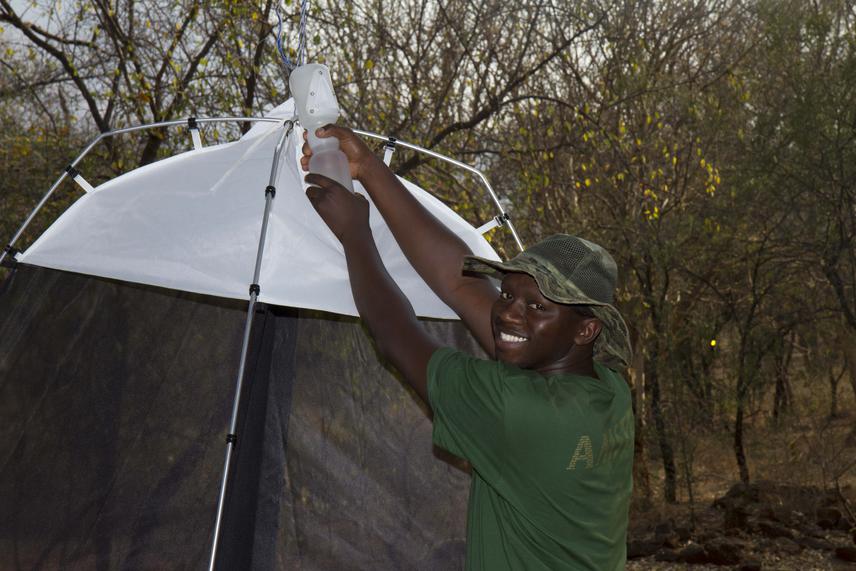Tlaishego Tedson Nkoana
This study aims to quantify seasonal changes of bat communities in relation to prey source availability and compare insect diversity and abundance between a savanna and grassland habitat.

Tlaishego (myself) deploying an insect trap. © Ernest Seamark
Intensive habitat fragmentation, urbanisation and agriculture can either increase or reduce available niche-space. Such changes in land-use may have positive or negative impacts on insect and bat communities. If such changes are negative, there is the potential to endanger bat populations that are dependent on insect prey. As primary predators of nocturnal flying insects, few studies have shown how bat species composition (species and abundance) in communities are affected by seasonal change in insect availability (species, size and abundance). I will be using bat detectors, various bat capture methods (mist netting and harp traps) and insect trapping to quantify diversity and abundance of bats and insects in karst areas of two different biomes.
Bat detectors together with insect intercept traps will be deployed at sites (open and closed) in grassland and savanna biomes. Insect traps will sample flying insects that are available as potential prey for the bats. These will be sorted into the various taxonomic orders, morpho-types and size classes. A combination of harp traps and mist nets will be used to capture bats at different locations around the landscape in the two biomes. The results will provide information on sex and age ratios, and species occurrences within the bat communities. Faecal samples will be collected and stored for future projects to compare diet between the two study areas. Echolocation calls of the bats will be recorded on release to add to an existing call library.
Skull and mandible measurements of museum specimens of bat species known to occur at the two study areas will be investigated to assess limitations on possible prey size a species is able to consume. This will allow me to assess any relationship between echolocation call data and insect captures; hypothesising a positive correlation between the available insect prey size classes and bat species that can prey on them.
Information obtained from this study will provide better understanding of the interactions between bats, insects and land use dynamics.